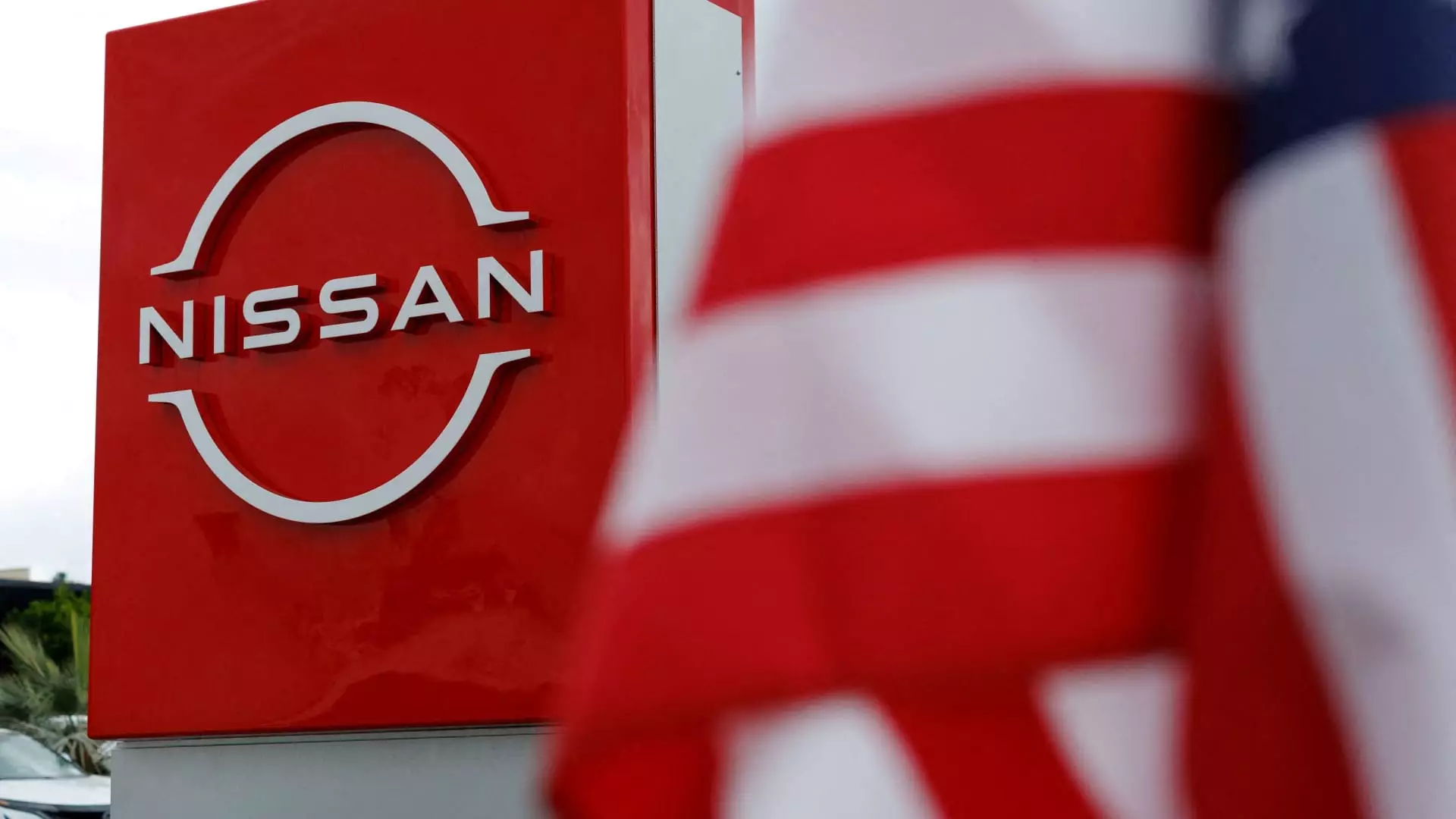Nissan’s recent rhetoric surrounding production capacity in the United States resonates with many who are disheartened by the adverse effects of tariffs instituted during Donald Trump’s presidency. The 25% auto tariffs were meant to bolster American manufacturing, yet they have instead plunged companies into a financial frenzy. Christian Meunier, the newly appointed chairman of Nissan Americas, has articulated an ambitious vision to “max out” production at their Smyrna, Tennessee facility—yet one must ponder whether this ambition embodies a strategic approach or simply a desperate attempt to navigate an overwhelming situation. Increasing domestic production in a country where the political winds can shift dramatically is fraught with risk, and Nissan must tread carefully.
While Meunier and his team are poised to optimize the operational capabilities of a plant capable of producing 640,000 vehicles a year, a deeper analysis reveals that merely ramping up production is not sufficient. Without a thoughtful strategy to mitigate the impacts of tariffs and evolve the product lineup, Nissan risks further entrenching itself in its ongoing struggles. Complicating matters, the tariffs on component parts are poised to further inflate costs, creating a precarious balancing act for profitable operations.
Reassessing the Supply Chain and Global Strategy
To “max out” production effectively, Nissan needs to rethink its supply chain management and sourcing strategies. Currently, many essential components are manufactured in Mexico and Japan. While Meunier hints at plans to bring more production stateside, the success of this endeavor hinges upon overcoming logistical and regulatory hurdles. An impulsive push to bring operations back to the U.S. without a robust plan could lead to bottlenecks in manufacturing and ultimately frustrate consumers who are already fatigued by rising prices and fewer options.
Meunier’s remarks about localization as a crucial element in Nissan’s strategy reveal a fundamental disconnect between aspiration and execution. Simply relocating production does not automatically confer resilience against market shifts or tariff changes; a strategic approach rooted in research and consumer demand is essential. For Nissan to thrive amidst economic uncertainty, it must prioritize agility in its operations, focusing not only on domestic production but also on optimizing global partnerships.
Innovation Over Tradition: The Case for Electric and Hybrid Vehicles
In an era marked by mounting pressure for sustainability and environmental responsibility, Nissan must pivot toward innovative production, especially in electrification. While Meunier has mentioned considerations of hybrid production, the automotive industry’s trajectory demands a seismic shift rather than gradual adaptations. With electric vehicles (EVs) quickly becoming the industry norm, stakeholders should scrutinize whether Nissan is truly equipped to reinvent its identity through forward-thinking innovations.
Tesla, as a leading force in the EV space, highlights the importance of a robust electric vehicle lineup. To remain competitive, Nissan must invest significantly in research and development to craft products that resonate with eco-conscious consumers. The future of the automotive industry is electric, and any failure to adapt could leave Nissan trailing behind more agile competitors.
Employee Engagement and Workforce Development
Even amid tariff chaos, Nissan’s workforce must not be an afterthought. The company asserts that it employs around 5,700 people at the Smyrna plant, and optimizing production requires a highly engaged and skilled workforce. Workers play a pivotal role not just in manufacturing but also in shaping a culture of innovation and quality. The workforce must be empowered again, with ongoing training and development to foster skills in current manufacturing techniques as well as emerging technologies.
It’s high-time that Nissan’s management acknowledges that when employees feel valued and well-equipped, productivity and morale surge. With an impending focus on new product lines and production capabilities, successful implementation will hinge on effective workforce engagement techniques. Instead of merely ushering employees into the next phase of capacity expansion, Nissan must adopt a holistic approach to staff development that reinforces a sense of loyalty and alignment with the company’s revitalized mission.
Rebuilding Consumer Trust Through Strategic Pricing and Product Development
Lastly, as the auto industry grapples with the uncertainty wrought by tariffs, Nissan’s ability to lure buyers back to its showrooms hinges significantly on strategic pricing. The adjustments made to the Rogue and Pathfinder prices to offset pricing pressures present a short-term solution; however, ongoing adjustments must be strategic to avoid eroding brand value. A transient price drop is insufficient without an overarching product strategy that meets consumer demands and expectations.
To completely reorient the brand narrative away from financial downturns, Nissan must focus on developing innovative and appealing vehicles that justify their price tags and resonate with consumers. The revitalization of Nissan requires more than just quick fixes; it demands a comprehensive brand overhaul fueled by consumer insights and forward-thinking innovations that positions the brand as a market leader in both technology and consumer trust.

